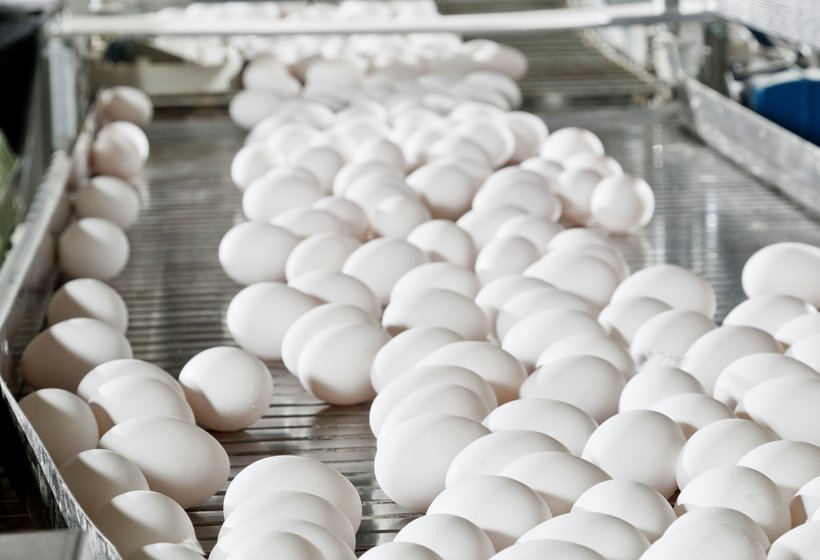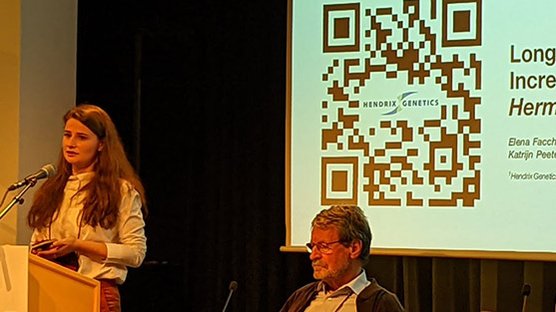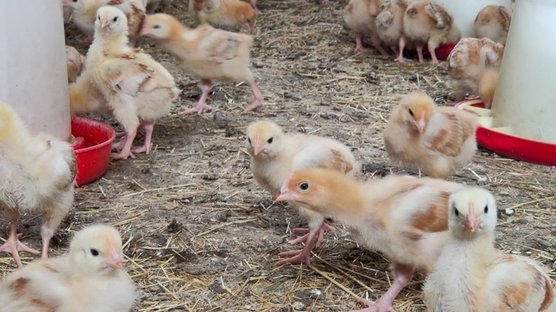
Published on April 23, 2020
Setting the standard for sustainable animal breeding
While our mission in: “Supporting the global food challenge with high quality animal genetics” is embedded into our present priorities and day-to-day activities, our vision extends well into the future: “Setting the standard for sustainable animal breeding.”
What does setting standards mean?
What does it mean to ‘set the standard’? Does it refer to personal standards, business standards, operating standards or product standards? How are standards perceived?
A simple example of standards can be observed in the normal context of dining out. Whenever an individual visits a restaurant and orders their favorite steak, they tend to reminisce about where they ate the best steak they’ve ever had. At that moment, that specific restaurant set the standard. All other steaks that they eat tend to be compared to the best one.
In an environment of increasing transparency, which is driven forward by a connected world, we have the opportunity to build our brand, create and build our reputation, and set standards. As animal breeders, we’re the first input into the value chain and play an important role through to the end consumer product. Sustainable animal breeding standards currently do not exist, but we believe that we have the opportunity to lead in this through:
- Improved biosecurity.
- Incremental genetic progress to improve efficiency of protein production.
- Balanced breeding programs that maximize value for all parts of the protein value chain, including consumers.
- Improved survivability of animals to generate the full value of all efforts
- Reduction of greenhouse gas emissions
Towards fulfilling our mission to support the global food challenge with high quality genetics, we can become the standard-setter in our industry. To become well-known as a standard-setter is an ambitious goal that will not be achieved in one year, but we aim to keep the vision in our minds as our future destination, with our mission providing the roadmap. Once we have ‘set the standard’, we will need to live up to that standard, which means the standards that we set will need to be proven and beneficial.
Real standards
More eggs from layers
We have already set new standards in number of first quality eggs laid per hen. As hens bred by us live happier, longer lives, they can lay more than 500 first quality eggs per hen housed. That represents an increase of 43% compared to hens bred in the 1960s.
Sows that can support more and healthier piglets
In pig breeding, we have focused on balanced breeding programs to select for sows with 16 teats that can support and feed bigger litters and breed with a mortality of below 10%. By working on traits such as feed efficiency, we can set further standards in sustainable pork production that reduces feed demand.
Higher hatching rate in trout
In our aquaculture business unit, we focus on the genetics of quality of end-products, the growth rate of fish and their yield. We guarantee a 90% hatching rate, but most achieve 95% easily. This is extremely high.
Traditional poultry is a new standard
Hendrix Genetics is a global leader in the traditional poultry market. With the acquisition of our traditional poultry breeding business, Sasso. Our traditional poultry include breeds of chickens, layers and turkeys that are healthy, easy to raise, and are bred to thrive in different environments. Dual purpose poultry that can be raised for both egg production and for meat is particularly efficient and sustainable in certain circumstances.
Biosecurity standards in salmon
In our aquaculture business, we focus on sustainable fish breeding traits that improve survivability, growth and health. The breeding environment standards that we have set already in sustainable salmon breeding include world-class biosecurity and disease-free status.
Setting standards in excellence
Vision 2025 is our strategy of growth through excellence. People and processes form the center of growth through excellence and they are also key factors for the sustainability of global food production.
People
We recognized in our strategy discussions that today the asset base of our organization resides in the talent, creativity and dedication of our employees. Especially in a breeding company like ours, we depend on knowledge and teams of individuals that are eager to take on the many challenges we face.
Processes
Technology is advancing rapidly around us, even in agriculture. Farming automation will continue to be a key area of focus to ease the dependence on farm labor in the entire protein value chain. In particular for us as a breeding company, connected data and tracking value chain performance have the potential to take genetic progress to a new level. Realtime genomic selection and gene editing as well as Artificial Intelligence (AI) are areas that are already beginning to effect giant leaps forward in genetic progress. Striving for continuous improvement in all our primary processes will have an important contribution towards our goal to serve the world with high quality protein.
Within our processes, we particularly focus on:
- Balanced breeding, which has always been one of our core values: focusing only on a single trait reduces benefits for all parts of the value chain, as all traits are intertwined.
- Preserving genetic diversity by continuous monitoring of inbreeding of our breeding stock through mating schemes.
- Partnerships and transparency to improve food security and food safety.
- Reducing environmental impact, through selecting for animals that are healthier, live longer and need fewer resources.
Our strategy towards 2025 focuses on these issues through our new vision: “Setting the standard for sustainable animal breeding”. Given our track record of addressing sustainability challenges, we believe that this vision is achievable.



